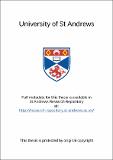Files in this item
Investigations into a macrosegregated, differentiated dolerite dyke, northern Skye, Scotland
Item metadata
| dc.contributor.advisor | Donaldson, C. H. | en |
| dc.contributor.author | Kyle, Alison H. | en |
| dc.coverage.spatial | 312p, 9p of plates. | en |
| dc.date.accessioned | 2021-04-08T08:57:10Z | |
| dc.date.available | 2021-04-08T08:57:10Z | |
| dc.date.issued | 1993 | |
| dc.identifier.uri | https://hdl.handle.net/10023/21844 | |
| dc.description.abstract | The Mystery Dyke is a differentiated dolerite sheet intruded along hexagonal joints of the Bornaskitaig leaf of the Little Minch Sill Complex (L.M.S.C.)/ northern Skye. Near-vertical banding parallel to the margins and approximately symmetrical about the median plane is displayed along the exposed 65m length of the dyke. A complete half-transect across the northern part of the dyke, comprising 11 bands distinguished on the basis of modal and textural differences has been obtained. The bands however may change progressively laterally along strike with certain amygdaloidal bands bifurcating both vertically and along strike. Bands of particular interest contain comb-layered olivine- and plagioclase or pyroxene. In the northern part, olivine- and plagioclase are the common comb-layered minerals, while to the south comb-layered pyroxene is more abundant. Petrographically, the normally porphyritic dyke is diverse, with comb-layering, ophitic, poikiliophitic and trachytic textures and chills developed. Whole-rock analyses of the bands indicate that the dyke consists of three distinct chemical groupings which have a general affinity with the L.M.S.C. picrodolerite analyses of Gibson (1988). Variation in whole-rock and mineral analyses across the banding may be progressive or abrupt. Comb-layered olivine- and plagioclase have restricted compositions with forsterite content increasing into the bands, towards the centre of the dyke. This suggest that supercooling of magma declined through the growth of these bands (or the melt became magnesium-rich). The dyke is multiple in type, although the compositional variations are not so great as to merit the term composite. A provisional model of oogenetic pulses of melt plus crystal-mush over a short time period, from a vertically layered, shallow-level chamber similar to that proposed by Gibson and Jones (1991) as the source for the Little Minch Sill Complex is proposed. | en |
| dc.language.iso | en | en |
| dc.publisher | University of St Andrews | en |
| dc.subject.lcc | QE462.B3K9 | |
| dc.subject.lcsh | Diabase | en |
| dc.subject.lcsh | Geology--Scotland--Skye, Island of. | en |
| dc.title | Investigations into a macrosegregated, differentiated dolerite dyke, northern Skye, Scotland | en |
| dc.type | Thesis | en |
| dc.type.qualificationlevel | Doctoral | en |
| dc.type.qualificationname | MSc Master of Science | en |
| dc.publisher.institution | The University of St Andrews | en |
This item appears in the following Collection(s)
Items in the St Andrews Research Repository are protected by copyright, with all rights reserved, unless otherwise indicated.

